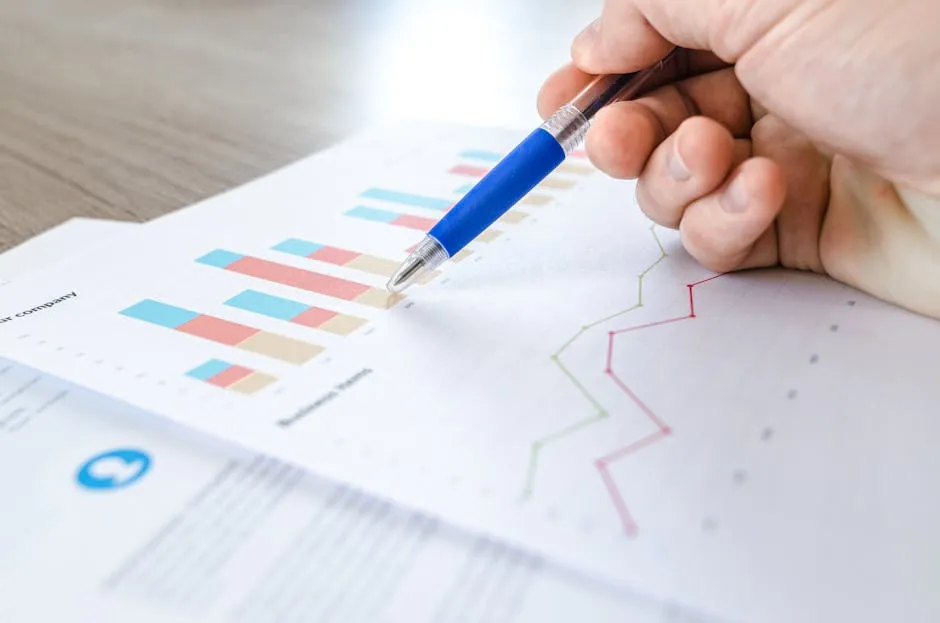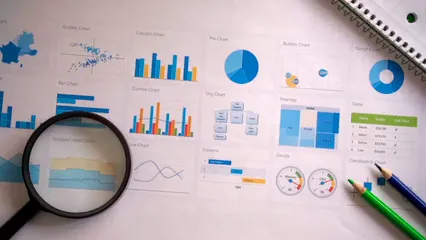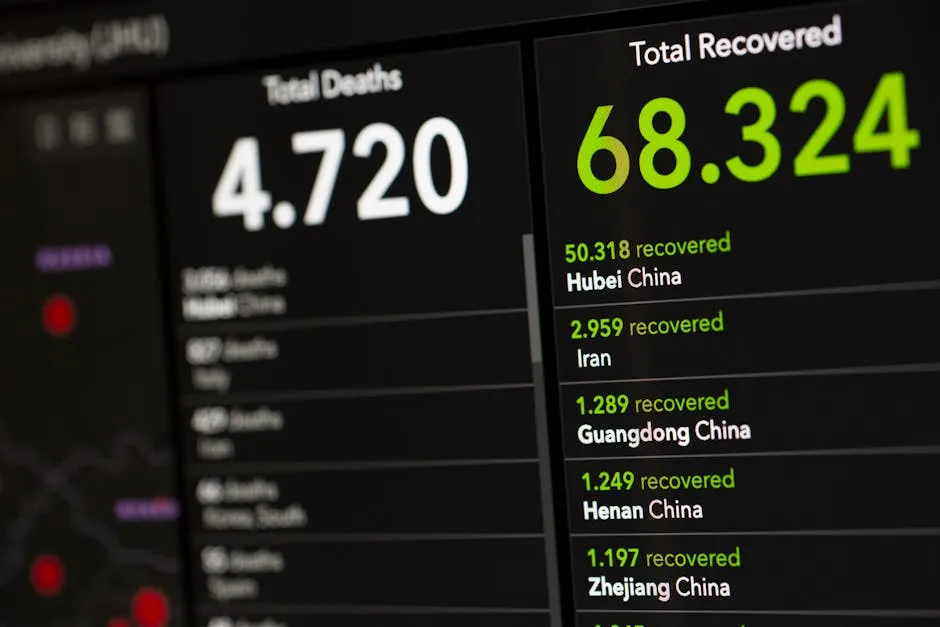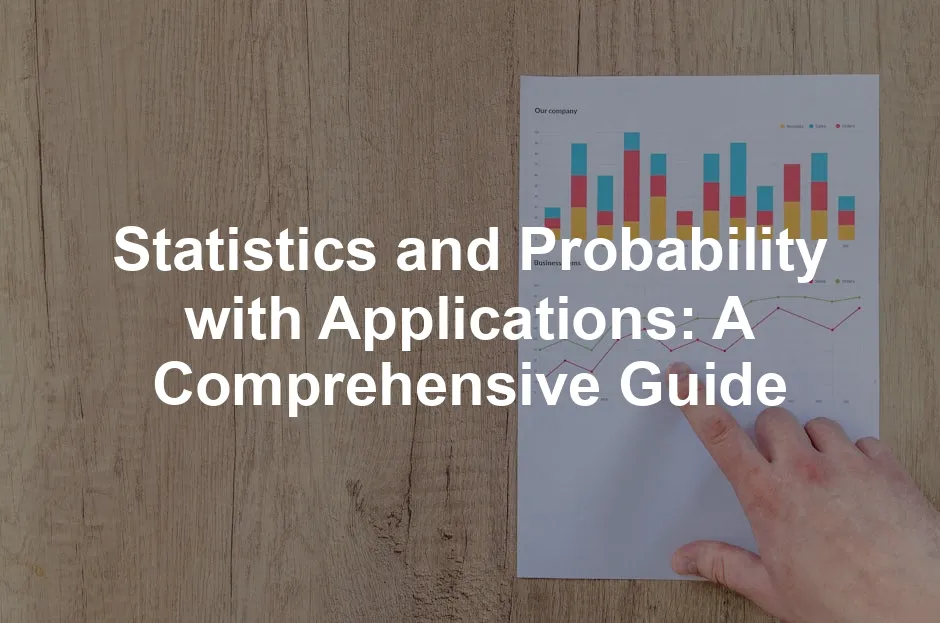Introduction
Statistics and probability may sound like a couple of math nerds huddled in a corner, but they are the life of the party in the real world! Statistics is the science of collecting, analyzing, and interpreting data. Probability, on the other hand, measures the likelihood of events happening. Together, these two fields help us make sense of the chaos around us. Imagine trying to predict the weather, manage a business, or even understand your favorite sports game without these fundamental concepts—utterly impossible!
In our daily lives, we encounter statistics in the most unexpected places. From understanding the latest health guidelines to making informed choices while shopping, statistics and probability are our trusty sidekicks. For instance, when you see a movie rating, you’re looking at a statistical summary of opinions. When a weather app shows a 70% chance of rain, it’s probability doing its magic. These concepts are not just for the mathematically inclined; they are essential tools for everyone.
This article aims to demystify statistics and probability while highlighting their applications across various fields. Whether you’re a student trying to ace your math class, an educator looking for engaging ways to teach these concepts, or a professional seeking to leverage data in your career, this guide is for you. We’ll cover essential principles, real-life applications, and tips on how to utilize statistics and probability effectively.
As we dive into this topic, keep an open mind and a curious spirit. You might find yourself chuckling at the absurdities of everyday statistics or marveling at how probability governs your life’s little surprises. So grab your favorite beverage, settle in, and let’s embark on this enlightening journey through the world of statistics and probability!

Understanding the Basics of Statistics and Probability
What is Statistics?
Statistics is the art and science of data. It helps us summarize complex information in ways that are easy to understand. Imagine trying to make sense of a mountain of data without any framework—yikes! Statistics saves the day by breaking down data into manageable bits. To deepen your knowledge, consider reading Statistics for Business and Economics by David F. Groebner. It’s a fantastic resource that simplifies complex data concepts!
Statistics can be divided into two main branches: descriptive and inferential statistics. Descriptive statistics is all about summarizing and presenting data. Here, we use measures like mean, median, and mode to describe a dataset. For example, if you collected scores from a class test, descriptive statistics would help you find the average score, making it easier to understand how the class performed overall. You can learn more about descriptive statistics in manufacturing plant.
Understanding descriptive statistics is crucial for analyzing data effectively. Learn more about it here.
Inferential statistics takes us a step further. It allows us to draw conclusions about a larger population based on a sample. Think of it as a sneak peek into a broader picture. For instance, if a pollster surveys 1,000 voters to predict an election outcome, they use inferential statistics. By analyzing the sample, they can make educated guesses about the entire population’s preferences.
Now, you might wonder how this all fits into daily life. Well, statistics is everywhere! From deciding which restaurant to try based on Yelp ratings to interpreting news reports about economic trends, we rely on statistical insights. When you hear that a new diet leads to a 30% weight loss, that’s statistics at work! It helps you make informed decisions and navigate the world with a bit more confidence.
As we unravel the layers of statistics and probability, remember that these concepts are not just for data scientists or mathematicians. They are tools that empower you to understand the world better. So, buckle up as we explore how statistics influences various aspects of our lives!

What is Probability?
Definition: Probability is a branch of mathematics that quantifies uncertainty. It measures how likely an event is to occur. Imagine flipping a coin. It could land on heads or tails. The chance of landing on heads is 50%. This simple example illustrates the concept of probability. Its significance lies in predicting outcomes in various fields—be it weather forecasting, finance, or sports. By understanding probability, we can make informed decisions based on calculated risks.
Basic Concepts: To grasp probability, we need to understand some key concepts:
- Events: These are specific outcomes or sets of outcomes. For instance, rolling a die can yield events like rolling a three or an even number.
- Sample Space: This is the set of all possible outcomes. For a die, the sample space is {1, 2, 3, 4, 5, 6}.
- Probability Rules: Several rules govern probability:
- The probability of any event ranges from 0 to 1.
- The sum of probabilities of all possible outcomes equals 1.
- The probability of an event occurring is the number of favorable outcomes divided by the total number of outcomes. For example, the probability of drawing an Ace from a standard deck of cards is 4 (Aces) divided by 52 (total cards), which simplifies to 1/13.
Applications: Probability finds its way into everyday life in surprising ways. For a deeper understanding, you can check out mendelian genetics probability pedigrees and chi-square statistics.
Probability plays a significant role in various fields, including genetics and statistics. Explore more about it here.
- Weather Forecasting: When you hear there’s a 70% chance of rain, meteorologists rely on probability models. They analyze historical weather data and current conditions to make these predictions.
- Risk Assessment: In finance, probability helps in assessing risks. Investors use probability to determine the likelihood of various market outcomes, aiding in making investment decisions.
- Games of Chance: Ever played Monopoly? Understanding the probability of landing on certain properties can give you an edge. Knowing the likelihood of rolling doubles or landing on “Go” can influence your strategy.
- Healthcare: In medicine, probability plays a crucial role in clinical trials. Researchers calculate the probability of a drug being effective based on patient outcomes, guiding treatment approaches.
In summary, probability is not just a mathematical concept; it’s a powerful tool that aids in decision-making across various fields. By understanding its basic principles and applications, we can better navigate the uncertainties of life.

Key Concepts in Probability
Types of Probability
Theoretical Probability
Theoretical probability is a mathematical approach to predicting outcomes. It’s like a crystal ball for mathematicians! This type is based on the assumption of equally likely events. For example, if you roll a six-sided die, the chance of landing on any number is 1 in 6. Mathematically, it’s expressed as:
P(A) = \frac{\text{Number of favorable outcomes}}{\text{Total number of possible outcomes}} So, if you want to know the probability of rolling a four, it’s 1 (the favorable outcome) divided by 6 (the total possible outcomes). This method is widely used in games, experiments, and theoretical studies, providing a foundation for more complex probability concepts. If you’re intrigued by probability, check out Probability: For the Enthusiastic Beginner by David Morin.

Empirical Probability
Next up, we have empirical probability, or the “let’s see what happens” approach. This type relies on actual experiments and observations rather than theoretical calculations. It’s like a scientific experiment where you roll that die multiple times, record the results, and analyze what you get.
The formula for empirical probability is:
P(A) = \frac{\text{Number of times event A occurs}}{\text{Total number of trials}} If you roll a die 60 times and get a four 10 times, the empirical probability of rolling a four is P(A) = \frac{10}{60} = \frac{1}{6}. This approach is especially useful in fields like healthcare, where data collection and real-world outcomes are essential in determining probabilities.

Subjective Probability
Now, let’s talk about subjective probability. This one’s a bit like tea leaves reading—based on personal judgment rather than mathematical calculations. It reflects an individual’s beliefs about how likely an event is to occur. For instance, you might think there’s a 70% chance it will rain today based on your gut feeling and the look of the sky.
Subjective probability is often used in situations where data is scarce or difficult to obtain. It’s common in fields like finance and insurance, where experts make calculated guesses based on experience and intuition. However, it’s essential to remember that subjective probabilities can vary widely from person to person.

Key Probability Distributions
Binomial Distribution
Let’s dive into the binomial distribution, a popular concept in probability. It deals with experiments that have two possible outcomes, often referred to as “success” and “failure.” Think of flipping a coin: heads or tails. The binomial distribution is defined by two parameters: the number of trials (n) and the probability of success (p).
The formula for the binomial probability is:
P(X = k) = \binom{n}{k} p^k (1-p)^{n-k} Where:
- P(X = k) is the probability of getting exactly k successes in n trials.
- \binom{n}{k} is a combination representing the number of ways to choose k successes from n trials.
For example, if you flip a coin 10 times (n=10) and want to find the probability of getting exactly 6 heads (k=6) with a success probability of 0.5 (p=0.5), you can plug those values into the formula. This distribution finds applications in various fields, including quality control and medical trials. To get a comprehensive guide on this topic, consider The Elements of Statistical Learning: Data Mining, Inference, and Prediction by Trevor Hastie.

Normal Distribution
Ah, the normal distribution! This one is the superstar of statistics. It’s often called the bell curve due to its shape. Many natural phenomena, like heights of people or test scores, follow this distribution. The normal distribution is defined by its mean (μ) and standard deviation (σ).
One of its most significant properties is the central limit theorem, which states that the sum of a large number of independent random variables will approximately follow a normal distribution, regardless of the original distributions of the variables.
The probability density function (PDF) of the normal distribution is given by the formula:
f(x) = \frac{1}{\sigma \sqrt{2\pi}} e^{-\frac{(x-\mu)^2}{2\sigma^2}} This function helps calculate the probability of a random variable falling within a particular range. For example, if you want to know the likelihood of a person being between 5’4” and 6’0” tall, you’d use this distribution. Moreover, if you’re keen on deepening your understanding of statistical concepts, The Art of Statistics: Learning from Data by David Spiegelhalter is a fantastic read!
In practice, normal distribution is crucial in statistics, especially in hypothesis testing and confidence intervals. It allows researchers to make inferences about populations based on sample data.

Understanding these key concepts in probability forms the foundation of statistical analysis. As we continue to explore statistics and probability, remember that these tools not only help us comprehend data but also allow us to make informed decisions in everyday life. With these insights, you’ll be well-equipped to tackle the challenges of probability and its applications!

Applications of Statistics and Probability
Business and Economics
Market Research
In the bustling realm of business, statistics reign supreme! Companies harness the power of data to analyze market trends and consumer behavior. Ever wondered how your favorite brands know exactly what you want? It’s all about the numbers!
Market research involves collecting data on potential customers. Businesses transform this data into insights that inform decisions. They analyze demographics, preferences, and buying habits. This information is crucial for developing products that cater to consumer desires.
For example, a company launching a new snack might survey consumers to understand flavor preferences. By analyzing this data, they create products that resonate with target audiences. The result? Higher sales and happy customers!
But that’s not all. Statistical methods also help businesses forecast sales. Historical data provides insights into future trends. Companies can estimate how many products to produce, minimizing waste and maximizing profits. If you want to dig deeper into data-driven strategies, consider reading How to Measure Anything: Finding the Value of “Intangibles” in Business by Douglas W. Hubbard.
Market research is not limited to big corporations. Small businesses can also benefit. With online surveys and social media analytics, even the smallest shops can gather valuable data. Statistics level the playing field, allowing everyone to compete!

Quality Control
Quality control is another area where statistics shines. In manufacturing, maintaining product quality is non-negotiable. Statistical methods ensure that products meet standards consistently.
One common technique is Statistical Process Control (SPC). This method uses control charts to monitor production processes. By analyzing variations, companies can identify issues before they become major problems. For more insights, check out statistical process control anomaly reddit.
Understanding statistical process control is essential for maintaining quality in manufacturing. Learn more about it here.
For instance, a car manufacturer might track the dimensions of car parts during production. If measurements start to deviate from specifications, adjustments can be made immediately. This proactive approach reduces defects and improves overall quality. If you’re interested in learning more about practical applications, check out Practical Statistics for Data Scientists: 50 Essential Concepts by Peter Bruce.
Moreover, statistical sampling is vital in quality assurance. Instead of checking every item, companies can sample a fraction. This approach saves time and resources while still providing reliable insights.
In summary, statistics play a critical role in business and economics. From understanding consumer behavior to ensuring product quality, these methods empower companies to thrive.

Healthcare and Medicine
Clinical Trials
In healthcare, statistics is the backbone of clinical trials. These trials evaluate the effectiveness of new treatments and medications. Without proper statistical analysis, we wouldn’t know if a drug is safe or beneficial.
Clinical trials often use randomized controlled trials (RCTs). Participants are randomly assigned to treatment or control groups. This method helps eliminate bias and ensures that results are reliable.
For example, consider a trial testing a new cancer drug. Researchers compare the survival rates of patients receiving the drug versus those receiving a placebo. Statistical analysis reveals whether the drug significantly improves outcomes. If you’re keen on understanding the statistics behind healthcare, Data Science for Business: What You Need to Know about Data Mining and Data-Analytic Thinking by Foster Provost is a great read!
Moreover, statistics help determine sample sizes for trials. A larger sample size increases the reliability of results. Researchers calculate the minimum number of participants needed to detect a meaningful effect.
The significance of statistics in clinical trials cannot be overstated. These methods ensure that treatments are rigorously tested before reaching patients.

Public Health
Public health relies heavily on statistics to inform policies and interventions. Epidemiology, the study of disease distribution, uses statistical methods to track outbreaks and identify risk factors.
For instance, during an epidemic, health officials analyze infection rates and demographics. This data helps them understand who is most affected and where to focus resources.
Statistics also aid in health policy-making. By analyzing data on health outcomes, officials can make informed decisions. For example, if statistics reveal a rise in obesity rates, governments can implement programs promoting healthy eating.
Furthermore, public health campaigns utilize statistics to measure effectiveness. By comparing health indicators before and after a campaign, officials can determine success.
In conclusion, statistics are indispensable in healthcare. They enhance clinical trials and guide public health initiatives. As we face new health challenges, statistical analysis will remain crucial for informed decision-making.

Education
Standardized Testing
Standardized testing is a hot topic in education. We often hear about the dreaded SAT, ACT, or state assessments. But what’s behind the curtain? Statistics! These tests evaluate educational outcomes through data analysis. How do we know if students are learning effectively? Enter statistics, the superhero of assessment!
When students take a test, their scores are collected and analyzed. Educators use this data to determine how well students are performing. Statistical methods help identify trends and areas needing improvement. For instance, if a particular math question stumps most students, it might signal a need for curriculum adjustments.
Moreover, statistics allow comparisons. Schools can evaluate their performance against others in their district or state. This benchmarking is crucial for accountability. By analyzing the data, educators can make informed decisions to enhance learning. So next time you hear about standardized tests, remember that statistics are working hard behind the scenes to improve education!

Data-Driven Decision Making
In today’s education landscape, data reigns supreme. Schools and universities utilize statistical data to drive improvements. No more guessing games! With data-driven decision making, institutions can pinpoint what works and what doesn’t.
How does this work? Educators analyze student performance data, attendance records, and demographic information. They identify patterns and trends that inform strategies. For instance, if a school notices lower performance in a specific subject, it may introduce targeted interventions.
This method not only enhances student learning but also boosts overall school performance. By leveraging statistical insights, educators can craft tailored programs. The result? A more personalized learning experience for students. Data-driven decision making transforms education from a shot in the dark to a well-lit path!

Sports Analytics
Performance Analysis
In the world of sports, statistics are the MVP! Coaches and analysts use data to evaluate player and team performance. Ever wondered how your favorite team makes those game-winning strategies? It’s all thanks to statistical analysis!
Performance metrics like points scored, assists, and turnovers are meticulously tracked. Teams analyze this data to assess players’ strengths and weaknesses. For example, if a basketball player consistently misses free throws, coaches can focus on improving that skill during practice.
Moreover, statistics help identify trends. Teams can analyze opposing players’ performance to develop strategies. If a quarterback struggles against certain defenses, coaches adjust their game plan accordingly. This data-driven approach enhances team performance and increases the chances of victory. So, the next time you cheer for your team, remember: behind every touchdown or slam dunk is a treasure trove of statistics!
Betting Odds
Probability plays a pivotal role in sports betting. Bookmakers set odds based on statistical analysis and market factors. But how do they determine these odds? It’s a blend of math and intuition!
When setting odds, bookmakers evaluate team performance, player stats, and historical data. They analyze the probability of various outcomes. For instance, if Team A has a 70% chance of winning against Team B, the odds reflect that likelihood. The goal is to balance the betting pool, ensuring the bookmaker profits regardless of the outcome.
This statistical approach helps bettors make informed decisions. Understanding odds allows fans to gauge risks and potential payouts. So, whether you’re placing a bet or just enjoying the game, remember that probability is at play, shaping the excitement of sports!
Conclusion
Statistics and probability are the dynamic duo of understanding our world. From education to sports, these fields provide crucial insights. In education, statistics guide standardized testing and data-driven decision making. They help schools improve student outcomes and tailor learning experiences.
In the realm of sports, statistics analyze performance and set betting odds. Coaches and analysts rely on data to make strategic decisions. Understanding these concepts opens doors to smarter choices in both education and sports.
Looking ahead, exciting trends are on the horizon. Data science and machine learning are merging with statistics and probability. These innovations promise to revolutionize how we analyze information. As technology advances, the applications of these fields will expand, providing even deeper insights.
So, whether you’re a student, educator, or sports enthusiast, the world of statistics and probability is worth exploring. Embrace these concepts for personal and professional growth. The more you understand, the better equipped you’ll be to navigate the complexities of life!
FAQs
Please let us know what you think about our content by leaving a comment down below!
Thank you for reading till here 🙂
All images from Pexels




